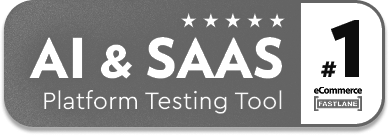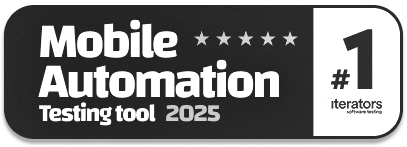Release Notes: Keyboard Accessibility, Desktop Testing using AI, Read-Only and Deny roles
|
|
Keyboard Navigability Accessibility Testing: New Filter for Keyboard Issues
Enhance your website’s accessibility compliance with our latest feature—keyboard navigability testing. A new filter has been added under Errors → Accessibility Issues, allowing users to specifically identify and address “keyboard issues” in their accessibility reports.
Key Features
-
Dedicated Keyboard Issues Filter: Quickly isolate and review accessibility errors related to keyboard navigation, ensuring comprehensive coverage of keyboard-specific concerns.
-
Industry-Standard Compliance: The filter aligns with recognized accessibility guidelines, such as those outlined by axe-core, to help you meet standards like WCAG and Section 508 (More info here).
-
Thorough Keyboard Accessibility Checks:
-
Ensures all interactive elements (buttons, links, forms) are accessible and operable using only the keyboard.
-
Verifies that the focus indicator is always visible and follows a logical navigation order.
-
Detects elements that cannot be reached or activated via keyboard, or where focus management is inconsistent.
-
Why Keyboard Accessibility Matters?
Testing keyboard accessibility is essential for users who rely on keyboard navigation, including individuals with motor disabilities or those using assistive technologies. By addressing keyboard issues, you improve usability, compliance, and the overall user experience for everyone.
How It Works
-
Navigate to
Errors → Accessibility Issuesin your accessibility dashboard. -
Use the new “keyboard issues” filter to view all detected problems related to keyboard navigation.
-
Review and resolve these issues to ensure your website is fully navigable and accessible without a mouse.
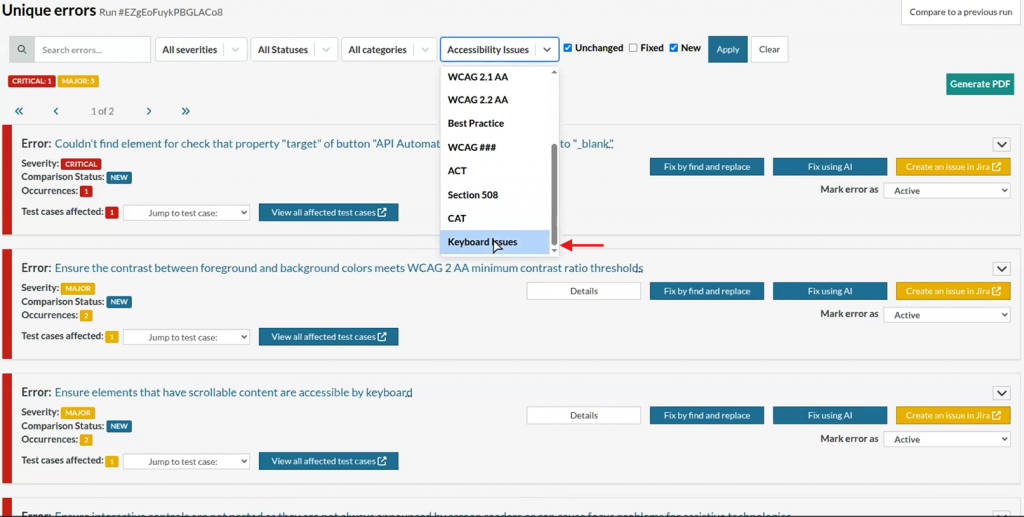
Caption: Showing new accessibility filter.
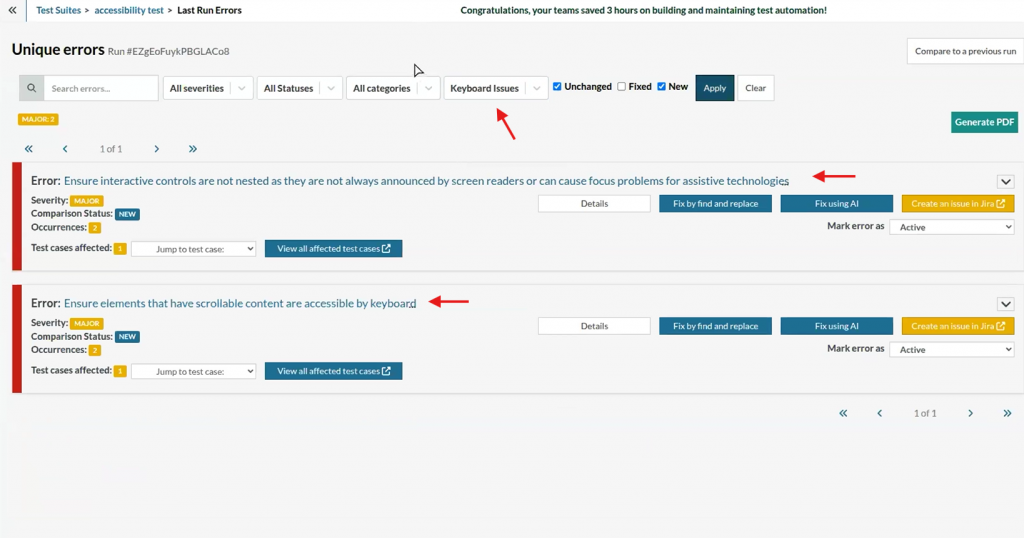
Caption: Filter results.
AI-Driven Test Case Generation for RDP Native Desktop Applications
Unlock seamless test automation for your native desktop applications with the new AI-powered test case generation feature for RDP (Remote Desktop Protocol) environments. This enhancement makes it easy to generate test cases based on natural language descriptions, just as you would for web or mobile apps.
Key Features
-
Visible “Generate Test Case” Option: The interface now prominently displays the option to generate test cases based on your description using AI, specifically for native desktop testing over RDP.
-
Natural Language Test Creation: Simply describe the desired test scenario in plain language. The AI interprets your instructions and generates executable test cases tailored for your desktop application.
-
Consistent Experience Across Platforms: Enjoy the same intuitive, AI-driven test generation workflow for native desktop apps as you do for other supported platforms, ensuring a unified and efficient testing process.
-
Enhanced Desktop Application Interaction: The AI is capable of interacting directly with your desktop application, automating complex workflows and validating functionality without manual scripting.
Benefits
-
Accelerated Test Authoring: Dramatically reduce the time and effort required to create comprehensive test cases for desktop applications.
-
Improved Test Coverage: Generate robust, reliable tests that cover a wide range of user interactions and application scenarios.
-
User-Friendly Automation: Empower QA teams of all skill levels to leverage advanced AI for desktop application testing, eliminating the need for specialized scripting knowledge.

Caption: AI description test case generator location.
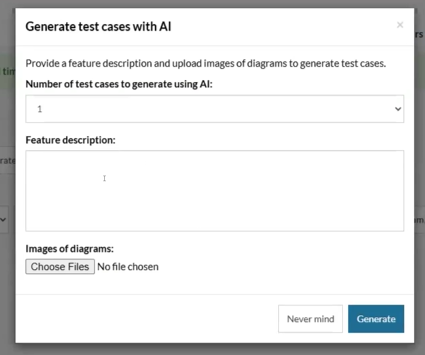
Caption: Description and number of test cases by AI.
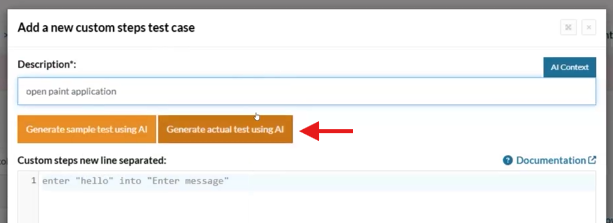
Caption: Generated using AI too.
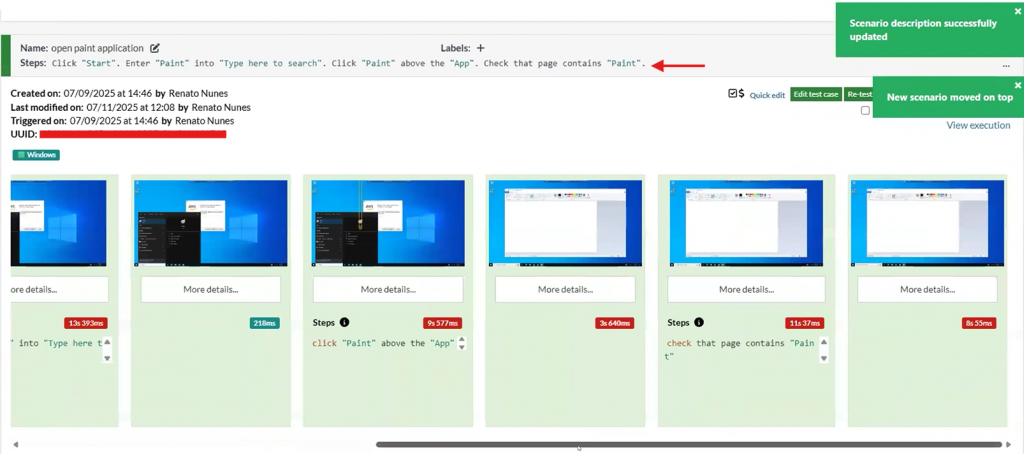
Caption: Execution result.
Introducing Read-Only and Deny Roles for Enhanced Test Suite Access Control
Take control of your test suite security and collaboration with the new Read-Only and Deny role options, designed to provide granular access management across your organization.
Read-Only Access for Test Suites
Empower your teams with flexible, secure sharing—mirroring the familiar “Share” functionality in Google Docs. You can now assign read-only access to individual users or entire teams for any test suite:
-
Streamlined User Interface: Users with read-only access will not see action buttons such as “Add test case,” “Find and Replace,” or “Edit test case.” Input fields are disabled too, and we make an exception for those buttons necessary for viewing, like “Retest,” “View Executions,” and Reports.
-
Easy Configuration: Manage permissions directly from
Profile → Company → Test Suitesfor intuitive setup and oversight. -
User and Team Level Control: Assign read-only access to a single user or multiple team members for maximum flexibility.
Deny Access Role for Enhanced Security
Strengthen data privacy by restricting access where needed:
-
Deny Access Option: Explicitly block users from viewing specific test suites, even if they have broad company-wide access.
-
Override Mechanism: Access permissions set at the collaborator (individual) level take precedence over team-level settings, ensuring precise control.
-
Flexible Application: Deny access to users not belonging to any team or to restrict visibility for sensitive test suites.
Key Benefits
-
Improved Security: Prevent unauthorized modifications and limit visibility to sensitive test data.
-
Efficient Collaboration: Share test suites with stakeholders who need visibility without risking accidental changes.
-
Scalable Management: Easily adjust permissions as teams grow or project requirements evolve.
Implementing these advanced access controls ensures your test suite management is both secure and adaptable, supporting compliance, collaboration, and operational efficiency across your organization.

Caption: Explicit access location.
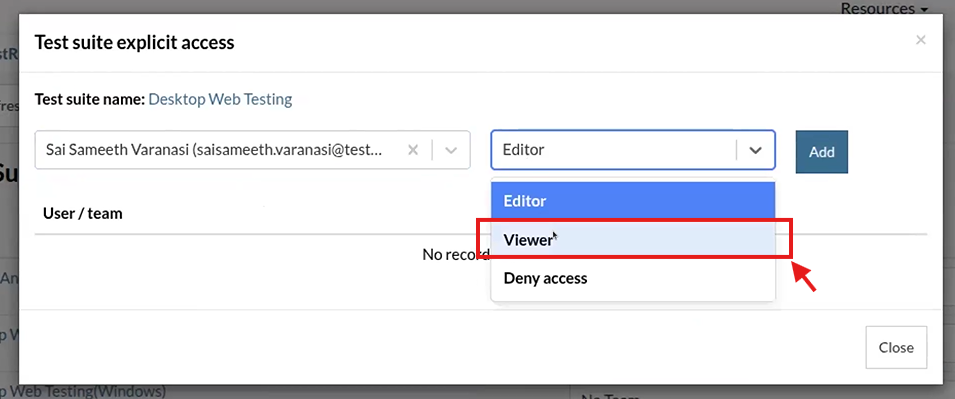
Caption: Viewer option.
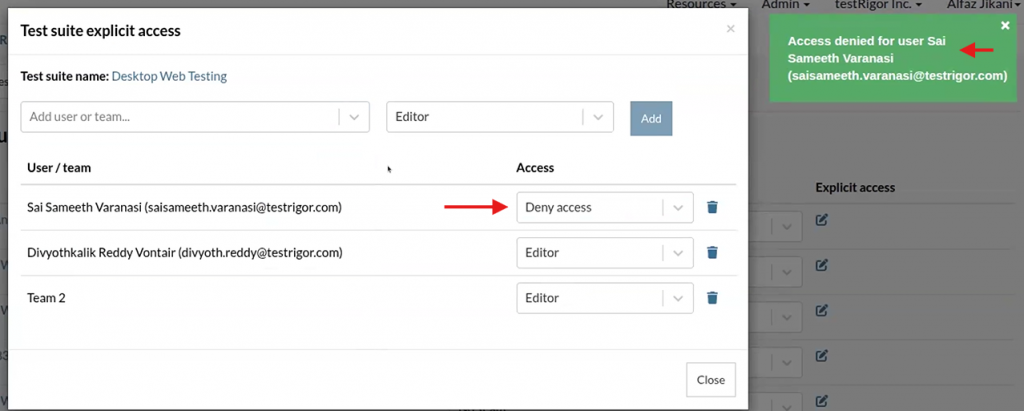
Caption: Viewer confirmation.
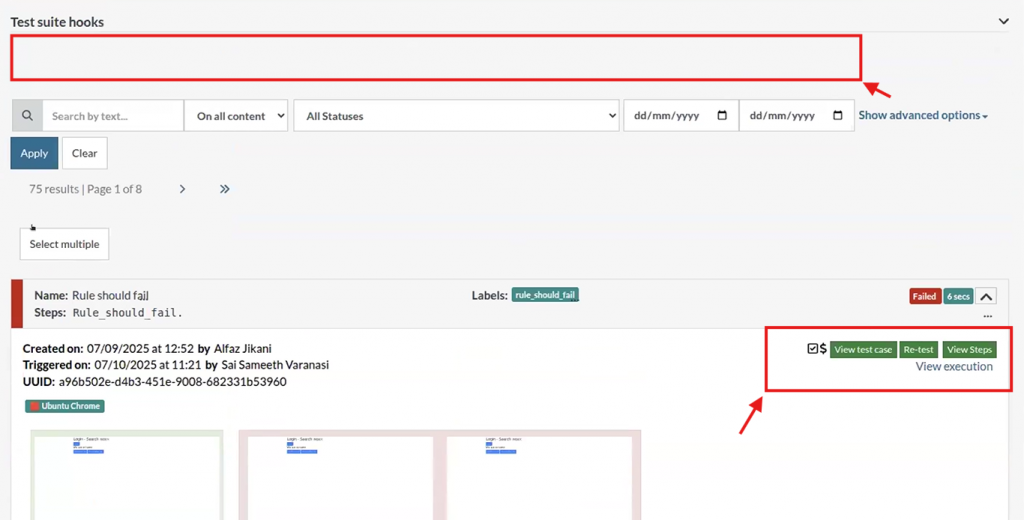
Caption: Action buttons not visible.
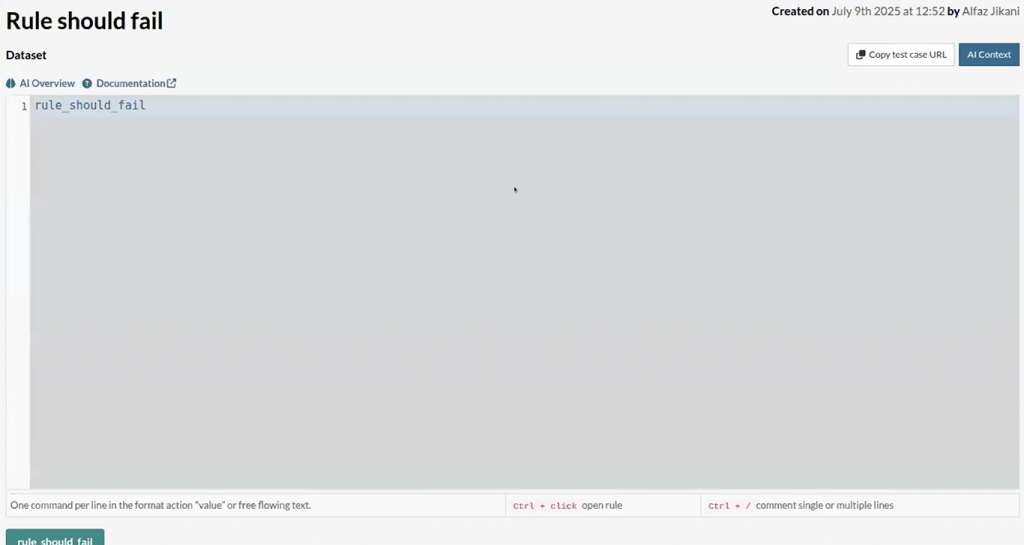
Caption: Input fields disabled.
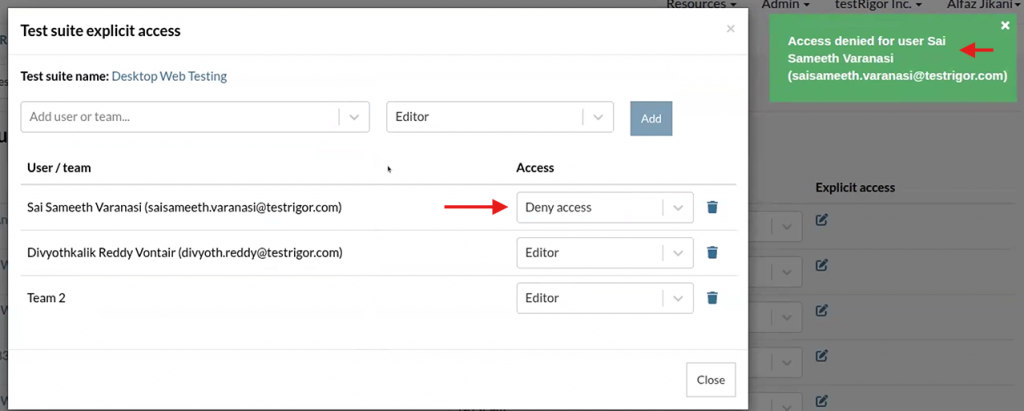
Caption: Deny Access.



